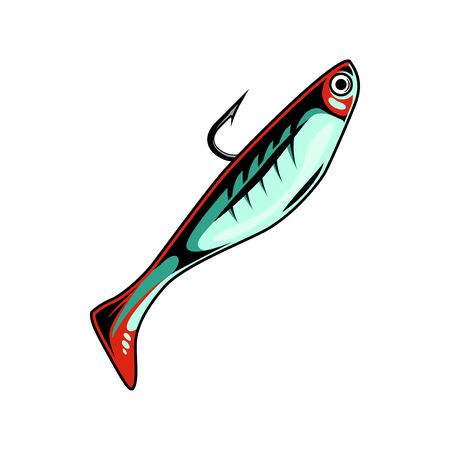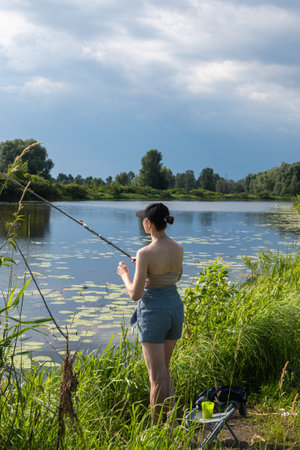Setting the Date and Gathering Your Crew
Planning the perfect ice fishing trip starts with choosing the right time and the right people. Timing is everything—safe, solid ice usually forms after a solid stretch of sub-freezing temps, often from late December through February in most northern states like Minnesota, Wisconsin, or Michigan. Check local ice thickness reports and always look for at least four inches of clear, solid ice before heading out. Avoid early season thin ice or late season thaw when conditions can change fast.
As for your crew, ice fishing isn’t a solo sport—safety comes first. Gather a group of reliable buddies who are experienced outdoors folks or at least have some common sense around winter hazards. It’s smart to fish in pairs or small groups so you can help each other if something goes sideways. Make sure everyone is on the same page about safety rules, gear responsibilities, and trip expectations. A good group will keep spirits high and make even the coldest days fun. Use group texts or apps to coordinate schedules, share updates on gear, and lock in your date when everyone’s available and conditions are prime.
Gear Up: Essential Packing List
Before you hit the ice, getting your gear right can make or break your trip. Ice fishing in the U.S. Midwest or up North means cold temps and unpredictable weather—so packing smart is essential. Here’s a breakdown of the must-have gear and a few packing hacks to keep you safe, warm, and efficient out on the ice.
Ice Fishing Gear Checklist
| Category | Essentials | Packing Tips |
|---|---|---|
| Rods & Reels | Short ice rods (24-36”), spinning reels, extra line | Pack rods in a hard case to avoid breakage; pre-rig extra rods for quick swaps |
| Auger | Manual or power auger (gas/electric), spare blades, blade cover | Bring a small bottle of oil for gas augers; keep blades sharp and covered for safety |
| Shelter & Seating | Portable ice shelter (flip-over or hub style), folding chair or bucket seat, insulated ground tarp | Choose a shelter with quick setup; use sleds to haul heavy items easily across snow |
| Clothing & Warm Layers | Thermal base layers, insulated waterproof outerwear, wool socks, gloves/mittens, beanie/balaclava, hand and foot warmers | Layer up for warmth—avoid cotton; store extra dry clothes in a waterproof bag just in case |
| Tackle & Bait | Tackle box with jigs/spoons, live bait container (wax worms/minnows), pliers/line cutter, tip-ups | Organize tackle by size/type for easy access with cold hands; keep bait insulated from freezing temps |
| Safety Equipment | Ice picks (worn around neck), spud bar, throw rope, first aid kit, cleats/traction aids for boots | Check ice thickness before heading out—4” minimum for walking; always fish with a buddy when possible |
| Food & Hydration | Thermos with hot drinks, high-calorie snacks (jerky/nuts/energy bars), water bottle (insulated) | Avoid glass containers; use wide-mouth bottles that won’t freeze shut easily in subzero temps |
| Electronics & Extras | Fish finder/flasher, GPS/phone (with charger/power bank), headlamp/lantern, extra batteries, small tool kit | Store electronics in dry bags; pack silica gel packs to prevent moisture damage from condensation |
Packing Hacks for Cold Weather Efficiency
- Sled It: Use an ice sled to haul your gear—its much easier than carrying everything by hand over snow and slush.
- Packing Order: Place frequently used items on top or outside pockets so you’re not digging through bags with frozen fingers.
- Mental Checklist: Do a quick “gear check” at home before leaving—the last thing you want is to show up without your auger or rod!
With this dialed-in packing list and smart hacks, you’ll be ready to face whatever Old Man Winter throws your way—and focus on what matters most: landing that trophy fish.

3. Prepping for Safety and Comfort
When it comes to ice fishing, safety and comfort should always be at the top of your checklist. Before you even step onto a frozen lake, make sure to conduct thorough ice safety checks. Always carry an ice chisel or auger to test thickness as you move—generally, you want at least 4 inches of clear, solid ice for walking and more if you’re bringing a snowmobile or ATV. Local bait shops and park rangers are great sources for up-to-date ice conditions.
Never hit the ice without a well-stocked emergency kit. Essentials include hand warmers, a first aid kit, rope, whistle, ice picks (worn around your neck), and a fully charged cell phone in a waterproof case. If possible, bring along a buddy—never fish alone on the ice. Let someone know your exact plans and expected return time.
Dressing right is just as crucial as your gear. Layer up with moisture-wicking base layers, insulating mid-layers (like fleece or wool), and a windproof, waterproof outer shell. Avoid cotton, which traps moisture and can rapidly sap body heat. Quality insulated boots, thick wool socks, gloves that allow dexterity, and a thermal hat are must-haves to protect against frostbite and hypothermia.
Staying dry is half the battle in unpredictable winter weather. Pack extra gloves and socks in case yours get wet. Consider bringing a portable heater for your shelter, but always ensure proper ventilation to prevent carbon monoxide buildup. Sit on an insulated pad rather than directly on the ice to avoid losing body heat.
Remember: conditions can change fast out there. Stay alert for cracks, pressure ridges, or slushy spots—if something feels off underfoot, backtrack immediately. With smart planning and the right prep, you’ll keep your adventure safe, warm, and enjoyable from start to finish.
4. Choosing the Right Lake
When it comes to planning a successful ice fishing trip, picking the right lake is half the battle. Not every frozen body of water is created equal—some offer better fishing, easier access, and most importantly, safer conditions. Here’s a practical guide to help you research and select the best spot for your adventure.
How to Research Potential Lakes
Start by checking state fish and wildlife agency websites or local Department of Natural Resources (DNR) updates. These resources often provide real-time reports on ice thickness, fish stocking schedules, and recent angler success stories. Community forums and social media groups can also give you boots-on-the-ground info from fellow ice anglers in your area.
Key Factors When Choosing Your Lake
| Lakes Features | Why It Matters | Where to Check |
|---|---|---|
| Ice Thickness & Safety | Your #1 priority—look for at least 4 inches of clear, solid ice for walking, more for ATVs or snowmobiles. | DNR websites, bait shops, local fishing reports |
| Fish Populations | The goal is to catch something! Look for lakes with healthy populations of your target species. | State fish stocking reports, angler forums |
| Accessibility | You need safe parking and easy access to the lake—especially if hauling gear or bringing kids. | Google Maps, local park services, community reviews |
| Up-to-Date Regulations | Laws change frequently; check for current seasons, limits, and special restrictions before you go. | DNR regulations pages, local bait shops |
Pro Tip: Don’t Rely on Old Info!
No two winters are alike in the U.S.—what was safe last year might not be this season. Always verify ice conditions and regulations within 24 hours of your trip. When in doubt, ask locals or experienced anglers at the nearest bait shop—they’re usually happy to help.
5. Fueling Up: Food and Drinks for the Ice
When you’re out on a frozen lake for hours, staying fueled is just as important as keeping warm. Ice fishing demands energy, so packing the right food and drinks can make or break your trip.
Hearty American Snacks
Forget the dainty snacks—think big, filling, and easy to grab with gloved hands. Classic beef jerky, trail mix loaded with nuts and chocolate, cheese sticks, and peanut butter crackers are all American staples that’ll keep your energy up. Don’t overlook protein bars or even homemade sandwiches (PB&J always hits the spot). These options won’t freeze solid and are simple to stash in a cooler or backpack.
Hot Drinks to Keep You Warm
Nobody wants to sip cold water when the wind’s howling across the ice. Bring along a heavy-duty thermos filled with piping hot coffee, cocoa, or tea—these will warm you from the inside out. If you want to go full American classic, add a splash of apple cider or try spiced hot chocolate. For longer trips, consider packing some instant soup packets; just add hot water for an instant morale boost.
Easy-to-Cook Meals on the Lake
If you’ve got a portable propane stove or grill, you can whip up warm meals right on the ice. Think hearty: chili in a thermos, pre-made breakfast burritos wrapped in foil, or canned soups and stews. Hot dogs are always a crowd-pleaser—you can roast them over a small firepit or on your stove. Don’t forget sturdy mugs and utensils that won’t crack in freezing temps.
Pro Tips for Packing Food
- Keep perishables like meat and dairy in an insulated cooler (the ice does half the work!)
- Use wide-mouth thermoses for soups and stews—they’re easier to fill and eat from with gloves on.
- Bring extra water—even in winter dehydration sneaks up on you.
The right food not only keeps you energized but also lifts everyone’s spirits during those long stretches between bites. A little planning goes a long way toward making your ice fishing adventure as enjoyable—and delicious—as possible.
6. Game Plan: Setting Up and Techniques
Efficient Hole Placement
Success on the ice starts with smart hole placement. Don’t just drill at random—target structure like drop-offs, weed beds, or submerged points where fish tend to congregate. Use a map or GPS app to scout likely locations ahead of time. Pro tip: Drill several holes in a grid pattern so you can quickly move between spots as conditions change.
Using Electronics to Your Advantage
Modern ice anglers rely on electronics like fish finders or flashers to locate schools of fish and monitor their movement. Drop your transducer into each hole before setting up camp—this saves energy and keeps you fishing where the action is. If you notice fish moving deeper or shallower, adjust your bait presentation or shift to another hole accordingly.
Basic Ice Fishing Tactics
Start with classic baits like minnows, wax worms, or jigs tipped with soft plastics. Jigging is a go-to technique: give your lure short, sharp lifts followed by pauses to mimic injured prey. Set lines at different depths until you dial in where the fish are biting. Remember, patience pays off—sometimes a slight change in jigging rhythm makes all the difference.
Keeping Morale High During Slow Bites
Inevitably, every trip hits a slow spell. Keep spirits up by taking turns telling stories, sharing snacks, or even bringing along a portable speaker for music. Rotate duties like checking tip-ups or drilling new holes so everyone stays engaged. Most importantly, remember that some of the best memories come from the camaraderie—not just the catch.

